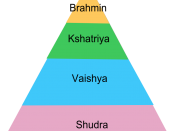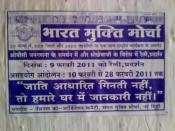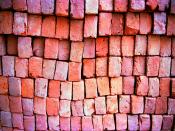Caste System The conquest of India by the Aryans led to a set of social institutions and class divisions that has persisted with only minor changes down to the present day. This set of social institutions and class divisions is commonly known as the caste, or class, system. It emerged from the clash of cultures in ancient India and was based on the superiority of the invading peoples over their conquered subjects.
In a sense, the clash of cultures became an issue of color, because the Aryan invaders, primarily light-skinned people, were contemptuous of their subjects, who were darker. Light skin came to imply high status, while dark skin suggested the opposite.
Indian classes were a set of rigid social classifications that determined not only one's occupation, but also one's status in society and one's hope for ultimate salvation. There were five major castes in Indian society. At the top were two castes, which clearly represented the ruling elites in Aryan society prior to their arrival in India: the priests and the warriors.
The priestly caste, known as the brahmins, was at the top of the social scale. The priests were highly spiritual and held great knowledge. Therefore, the people looked to them for guidance.
The second caste was the kshatriya, or the warriors. The warriors were strong, brave people who fought for the country. At one point in time, some people ranked the warriors above the priests. However, the priests began writing and records events, which led to them being at the top of society.
The third-ranked caste in Indian society was the vaisya, otherwise known as the commoners. Their primary duties were to tend to cattle or to engage in commerce. Although this caste was ranked below the first two in social status, it shared with them...


